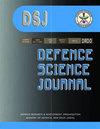Aerodynamic Investigation of Blended Wing Body Configuration
IF 0.8
4区 工程技术
Q3 MULTIDISCIPLINARY SCIENCES
引用次数: 0
Abstract
A blended wing body (BWB) configuration is an unconventional aircraft design in which the wing and fuselage are blended to form an aircraft. This design concept has inherent higher aerodynamic efficiency, environmental benefits and capacities. These advantages make the BWB configuration a feasible concept for commercial transport aircraft. In the present work, a 3-D BWB model is designed in SolidWorks and fabricated using a 3D printer. The numerical and experimental analyses are carried out with this BWB geometry. Aerodynamic characteristics and flow features obtained from the open-source CFD software OpenFOAM have been studied, analyzed, and compared with the wind tunnel results. Experimental and computational data compare well and the present BWB can operate at a high angle of attack. The coefficient of lift (CL) increases with AoA up to 45º. The CL starts decreasing beyond this AoA, and the present BWB geometry stalls at around AoA = 45º. The coefficient of drag (CD) increases with the increase in AoA due to the spreading of the separated region over the geometry. Lift/Drag (L/D) variation with AoA is also studied to find the optimum flight configuration of the present BWB geometry. Sectional pressure distribution at different spanwise locations, velocity contours, pathlines, surface limiting streamlines and tuft flow visualization are also presented to investigate the flow. The studies investigate the aerodynamics, flow field and optimal flight configuration for cruising a BWB geometry.混合翼身结构气动特性研究
& # x0D;混合翼身(BWB)结构是一种非常规的飞机设计,它将机翼和机身混合在一起形成一架飞机。这种设计理念具有更高的气动效率、环境效益和能力。这些优点使BWB配置成为商用运输机的可行概念。在本工作中,在SolidWorks中设计了一个三维BWB模型,并使用3D打印机制作。利用该BWB几何结构进行了数值和实验分析。对开源CFD软件OpenFOAM获得的气动特性和流动特性进行了研究、分析,并与风洞结果进行了比较。实验数据与计算数据比较良好,表明BWB可以在大迎角下工作。升力系数(CL)随着AoA的增加而增加,最高可达45º。超过AoA后,CL开始下降,目前的BWB几何形状在AoA = 45º附近停止。阻力系数(CD)随着AoA的增加而增加,这是由于分离区域在几何体上的扩展。还研究了升力/阻力(L/D)随AoA的变化,以找到当前BWB几何形状的最佳飞行构型。不同展向位置的截面压力分布、速度轮廓线、路径线、表面极限流线和簇状流动显示也被用于研究流动。研究了空气动力学,流场和最佳飞行配置巡航的BWB几何。
本文章由计算机程序翻译,如有差异,请以英文原文为准。
求助全文
约1分钟内获得全文
求助全文
来源期刊

Defence Science Journal
综合性期刊-综合性期刊
CiteScore
1.80
自引率
11.10%
发文量
69
审稿时长
7.5 months
期刊介绍:
Defence Science Journal is a peer-reviewed, multidisciplinary research journal in the area of defence science and technology. Journal feature recent progresses made in the field of defence/military support system and new findings/breakthroughs, etc. Major subject fields covered include: aeronautics, armaments, combat vehicles and engineering, biomedical sciences, computer sciences, electronics, material sciences, missiles, naval systems, etc.
 求助内容:
求助内容: 应助结果提醒方式:
应助结果提醒方式:


